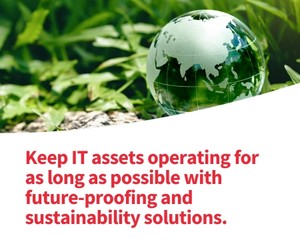Step 1: Monitor and Measure Energy Use
Every business — not just those in energy and utilities — should monitor and measure energy usage routinely. In the U.S., for instance, small businesses alone spend over $60 billion a year on energy, and up to 30 percent of this can be attributed to inefficient energy use. Wasted energy use contributes to increased emissions of certain air pollutants and greenhouse gases, which are key contributors to climate change.
The problem can be avoided by choosing smart connectivity options that increase energy efficiency and reduce an organization’s carbon footprint. IT leaders can also work with a tech partner, such as CDW, to get a full view of their organization’s energy use and environmental impact. From there, they can select products, solutions and services to keep their energy costs low.
If companies make this collective commitment, they could save over $2 trillion a year across the global economy, research shows.
“It’s important that companies know of options to donate their old electronic equipment so that it doesn’t end up in a landfill,” says Dylan Zajac, founder and executive director of Computers 4 People. “I think donating is possibly the best option because it’s free. And don’t you want to know that your computer went to a good cause?”
Donation is a way of recycling old technology, but businesses can also resell it to an IT service provider or refurbish it so that working parts are salvaged.
RELATED: Why your tech investments play a crucial role in sustainability.
Step 3: Implement a Lifecycle Management Strategy
In 2023, 72 percent of CEOs pledged to prioritize digital investments. But to get the maximum ROI, the technology itself needs to run properly and last a long time. That’s where a technology lifecycle management strategy comes in. It can help increase business productivity while mitigating excess energy use and ensuring sustainable practices, from device acquisition to disposal.
An effective lifecycle management strategy considers the complete IT environment from software and hardware to Software as a Service. It also requires two components: IT asset management and IT asset disposal. In short, how will IT leaders manage their technology during active use? And once it is time to retire the technology, how can the organization dispose of it responsibly?
Answering these questions will help organizations extend the lifecycle of their technology and ensure that each product boosts a part of the business.
UP NEXT: Achieve more energy efficiency in your tech ecosystem.












